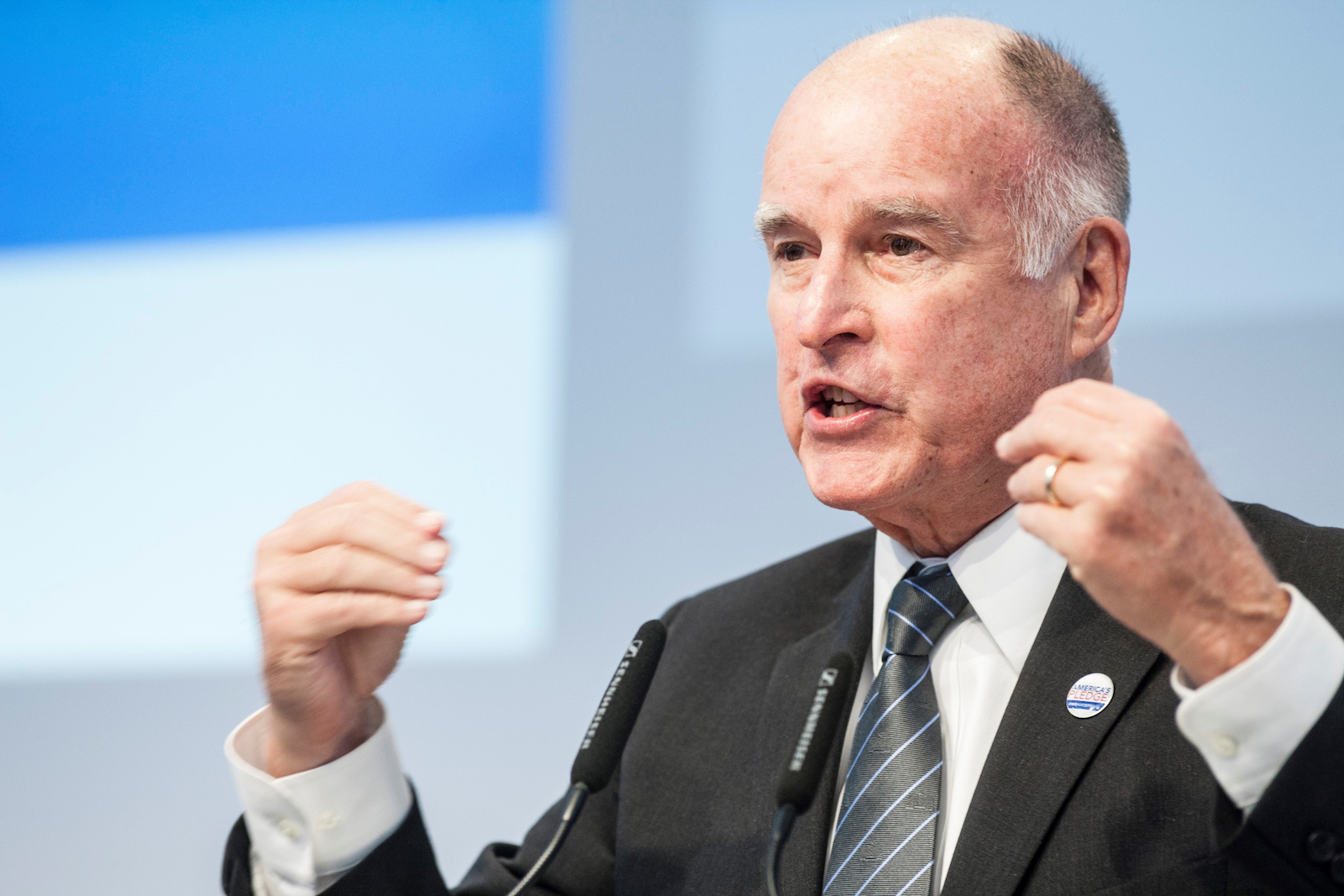
Politics
California’s Elder Statesman
The national media love the picturesque, rising star in politics, but often an elder statesman accomplishes substantive, lasting reform. California governor Jerry Brown, 73, follows a proud tradition of veteran politicians who brought intellect, verve, and passion to the governorship—an office most often used as a step stool to federal office rather than for genuine policy leadership. Gov. Brown is America’s oldest serving governor but also one of its most energetic.
Lawton Chiles, governor of Florida from 1990 to 1998, achieved the governorship at age 60. He held no ambitions for further elected office. Chiles called his years as chief executive the “don’t give a damn phase of my life.” Chiles died in office in 1998, leaving a legacy of good works on early childhood health care, governmental transparency, and tobacco control. Jim Hunt governed North Carolina from 1976 to 1984, and again from 1992 to 2000. Like Gov. Jerry Brown, he shares the distinction of having served non-consecutive terms. Hunt ended his service at age 63 after sixteen years total as governor, boasting a sterling reputation nationally for leadership on education.
Gov. Brown faces an unforgiving economy aggravated by accusations from the rest of the country that California incited the Great Recession. The June unemployment rate in his state was about 12 percent. California lost more than a million jobs in the past three years. But the Golden State’s seasoned governor can marshal a treasure of intellectual assets and social networks rare in American history. Brown first served as California’s chief executive from 1974 to 1982. Later he served as mayor of Oakland from 1998 to 2006. The path to the White House through the governor’s mansion is so well-worn that some friends thought Brown crazy for seeking the mayoralty of Oakland when he did. “There’s a lot of work to do in Oakland,” he responded to naysayers.
Brown also famously and fruitlessly sought the Democratic nomination for president in 1992, a rival to future president Bill Clinton. Brown served as state attorney general from 2006 to 2010 and then made a successful non-consecutive bid for the governorship last November. If one counts his three presidential campaigns and one U.S. Senate campaign as national exposure, Gov. Brown commands experience at local, state, and federal levels.
Has this veteran perspective benefited California? The record so far is mixed. The governor’s first budget repeated the gimmickry and shallowness of previous administration budgets. It based fiscal health on a sudden uptick in capital gains tax revenue, yet the stock market has languished and convulsed since June. State revenue is falling short for the new fiscal year. If conditions do not improve by January of next year, the state will have to cut more services to balance the budget, per the latest budget agreement.
On the plus side of the ledger, Gov. Brown has made strides for the environment and democratic values. He smartly pins his hopes for future budget revenues on a clean energy economy—especially solar energy. Brown recently signed a law requiring 33% of energy to be renewable in his state by 2020, toughening a previous mandate set at 20% by 2020. “It’s about California leading the country. It’s American potentially leading the world,” said the governor at the signing ceremony. On July 22, the governor asked a federal court to quash a request for an injunction made by opponents of a 370-megawatt solar plant in the Mojave Desert. “When local communities try to block the installation of photovoltaic, we act to overcome the opposition. Some kinds of opposition you have to crush.”
In a win for popular sovereignty, Gov. Brown last week signed legislation mandating that California reward its electoral votes based on the national popular vote, if enough states sign onto this alternative plan. Now, states representing 132 of 270 electoral votes have agreed to the reform. Gov. Brown’s support has given the national movement a realistic chance. But one legislation session is far too little to render judgment on Gov. Brown. For the most hardened, versatile politicians, their grandest political acts are often their last.
William Howard Taft served as chief justice of the U.S. Supreme Court after the presidency; he received considerably more acclaim for his work in the judicial branch than for his executive career. After his presidency, John Quincy Adams served in the U.S. House for 17 years until his death. Though a reviled president, Adams acquired renown as a fiery opponent of slavery in the House.
Like California Gov. Jerry Brown, Gov. Lawton Chiles of Florida botched his first budget. He ruined his relationship with the legislature despite short-term wins on a few issues. But over the long-term Chiles prospered from that precious political value that eludes many political novices—patience. His final major initiative, his victory of Big Tobacco in the courtroom in 1997, came after years of preparatory maneuvering. Gov. Chiles first considered the prospect of a lawsuit against the industry in 1991.
By forcing cigarette manufacturers to settle with the state of Florida for more than $13 billion over 25 years, Gov. Chiles advanced public health, recovered tobacco-related Medicaid costs, and finally established the fiscal stability for the state that he had sought unsuccessfully in his first year through tax reform. Gov. Chiles had a particular expression for the process of waiting for windows of opportunity whiles others rushed into legislative frays. “Let it cook,” he would caution his staff. While he waited for the right moment to intervene on issues like school prayer, tobacco control, and corporate tax breaks, Gov. Chiles talked to old friends, received counsel from staff and family, and quieted his mind in the woods outside Tallahassee.
The Tallahassee Democrat’s Bill Cotterell explained the Chiles style: “You think he’s this country lawyer and he can follow you in a revolving door and come out first. And you don’t notice it until he’s done it to ya.” Gov. Jerry Brown, like Chiles, appears to see time and experience as his allies. He is prepared to lose a few battles if it improves the odds for long-term reform. Brown’s plan is to stun Californians by the severity of his budget cuts in education, health care, and other key services. Only then, he believes, will the environment for introducing major tax hikes be right. Only then can California stabilize its budget. “You have to keep cutting to the point where people say they want to increase their contribution,” says Gov. Brown.
A recent New York Times profile of Gov. Brown describes him as having “self-confident humor and a command of facts, history and languages that befits a man in the eighth decade of his life, as he likes to describe himself.” The Brown legacy, taking shape in such a dire economic climate in a huge state, will influence political debate far beyond California. If successful, it could halt popular momentum for term limits. It will affect how Americans evaluate age and experience in candidates for elected office across the country.

